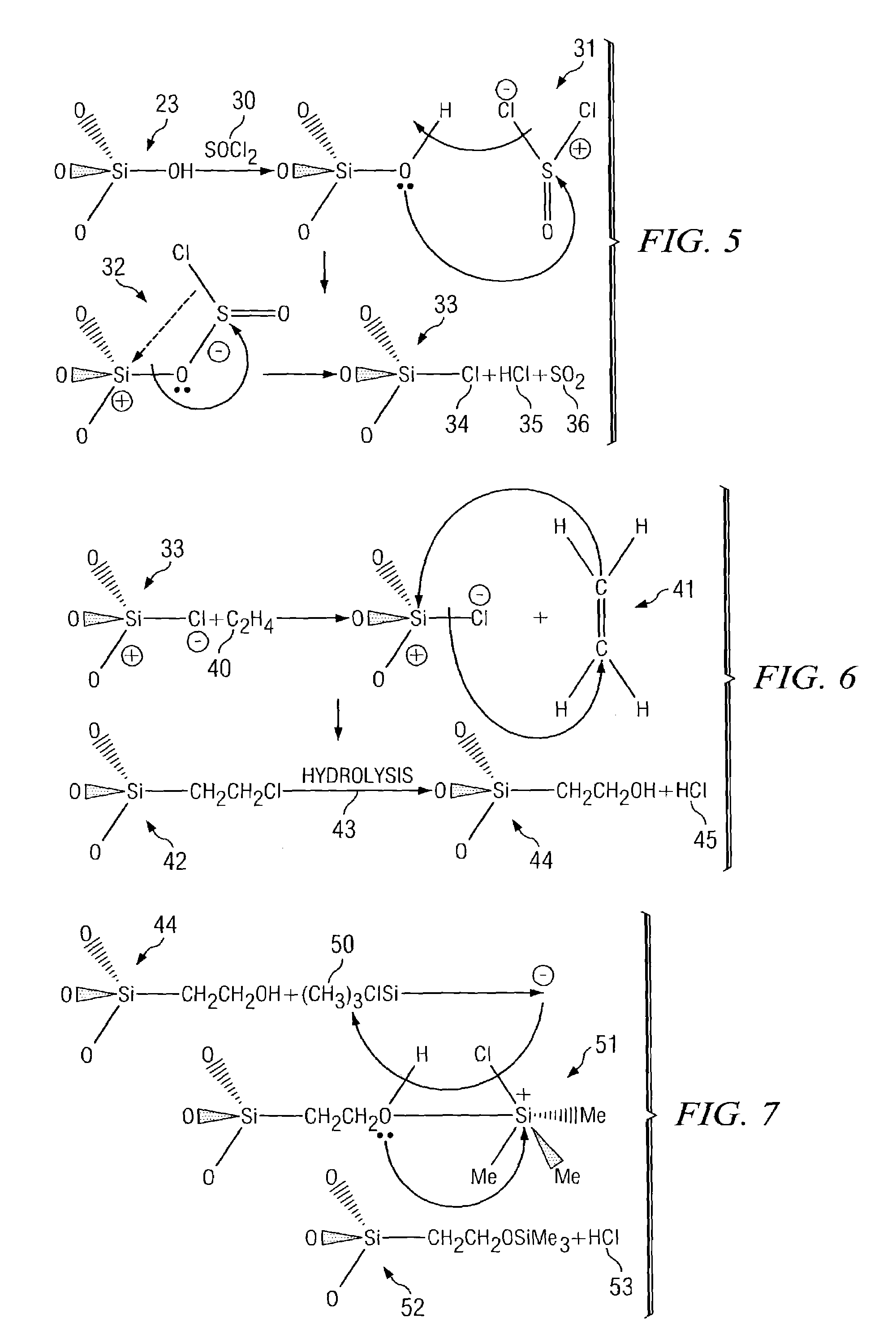Process for improving dielectric properties in low-k organosilicate dielectric material
a dielectric material and organosilicate technology, applied in the field of semiconductor/solid-state device manufacturing, electrical equipment, basic electric elements, etc., can solve the problems of increasing both leakage current and dielectric constant, interconnect delay becomes a significant performance barrier for high-speed signal conduction, and material damage is believed to occur, etc., to achieve short treatment time, improve efficiency, and reduce pressure
- Summary
- Abstract
- Description
- Claims
- Application Information
AI Technical Summary
Benefits of technology
Problems solved by technology
Method used
Image
Examples
Embodiment Construction
[0023]The making and using of the presently preferred embodiments are discussed in detail below. It should be appreciated, however, that the present invention provides many applicable inventive concepts that can be embodied in a wide variety of specific contexts. The specific embodiments discussed are merely illustrative of specific ways to make and use the invention, and do not limit the scope of the invention.
[0024]The present invention will be described with respect to preferred embodiments in a specific context, namely an organosilicate low-k dielectric whose dielectric properties have been degraded through oxidation by exposure to O2 plasma. The invention may also be applied, however, to such dielectrics that have had silicon-carbon bonds broken by other steps in the semiconductor fabrication process.
[0025]With reference now to FIG. 1, there is shown a process 10 embodying the present invention. A previous step in the semiconductor fabrication process 11, degrades the dielectri...
PUM
| Property | Measurement | Unit |
|---|---|---|
| dielectric constant | aaaaa | aaaaa |
| pressure | aaaaa | aaaaa |
| pressure | aaaaa | aaaaa |
Abstract
Description
Claims
Application Information
 Login to View More
Login to View More - R&D
- Intellectual Property
- Life Sciences
- Materials
- Tech Scout
- Unparalleled Data Quality
- Higher Quality Content
- 60% Fewer Hallucinations
Browse by: Latest US Patents, China's latest patents, Technical Efficacy Thesaurus, Application Domain, Technology Topic, Popular Technical Reports.
© 2025 PatSnap. All rights reserved.Legal|Privacy policy|Modern Slavery Act Transparency Statement|Sitemap|About US| Contact US: help@patsnap.com


